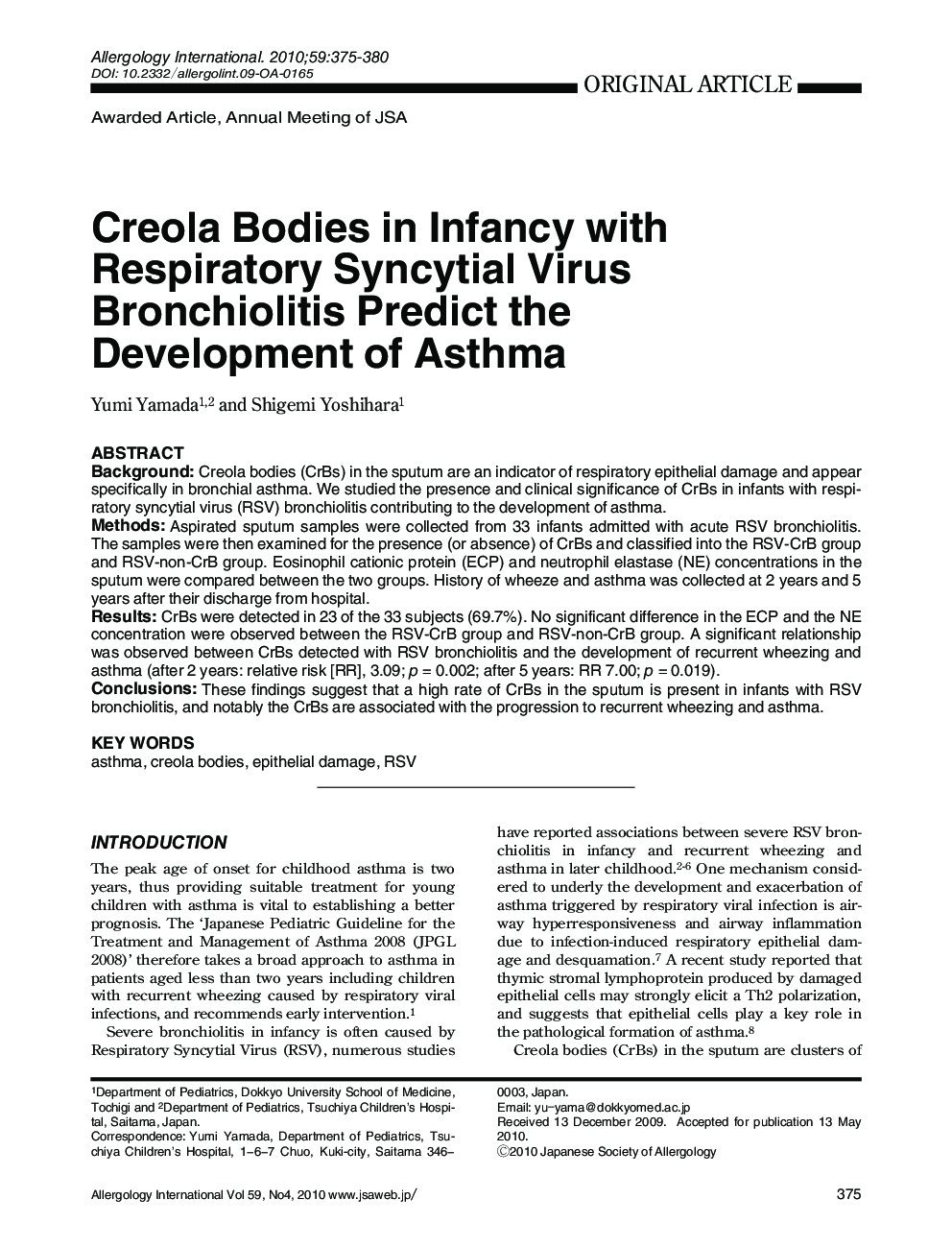| کد مقاله | کد نشریه | سال انتشار | مقاله انگلیسی | نسخه تمام متن |
|---|---|---|---|---|
| 3340934 | 1214080 | 2010 | 6 صفحه PDF | دانلود رایگان |

ABSTRACTBackgroundCreola bodies (CrBs) in the sputum are an indicator of respiratory epithelial damage and appear specifically in bronchial asthma. We studied the presence and clinical significance of CrBs in infants with respiratory syncytial virus (RSV) bronchiolitis contributing to the development of asthma.MethodsAspirated sputum samples were collected from 33 infants admitted with acute RSV bronchiolitis. The samples were then examined for the presence (or absence) of CrBs and classified into the RSV-CrB group and RSV-non-CrB group. Eosinophil cationic protein (ECP) and neutrophil elastase (NE) concentrations in the sputum were compared between the two groups. History of wheeze and asthma was collected at 2 years and 5 years after their discharge from hospital.ResultsCrBs were detected in 23 of the 33 subjects (69.7%). No significant difference in the ECP and the NE concentration were observed between the RSV-CrB group and RSV-non-CrB group. A significant relationship was observed between CrBs detected with RSV bronchiolitis and the development of recurrent wheezing and asthma (after 2 years: relative risk [RR], 3.09; p = 0.002; after 5 years: RR 7.00; p = 0.019).ConclusionsThese findings suggest that a high rate of CrBs in the sputum is present in infants with RSV bronchiolitis, and notably the CrBs are associated with the progression to recurrent wheezing and asthma.
Journal: Allergology International - Volume 59, Issue 4, 2010, Pages 375-380